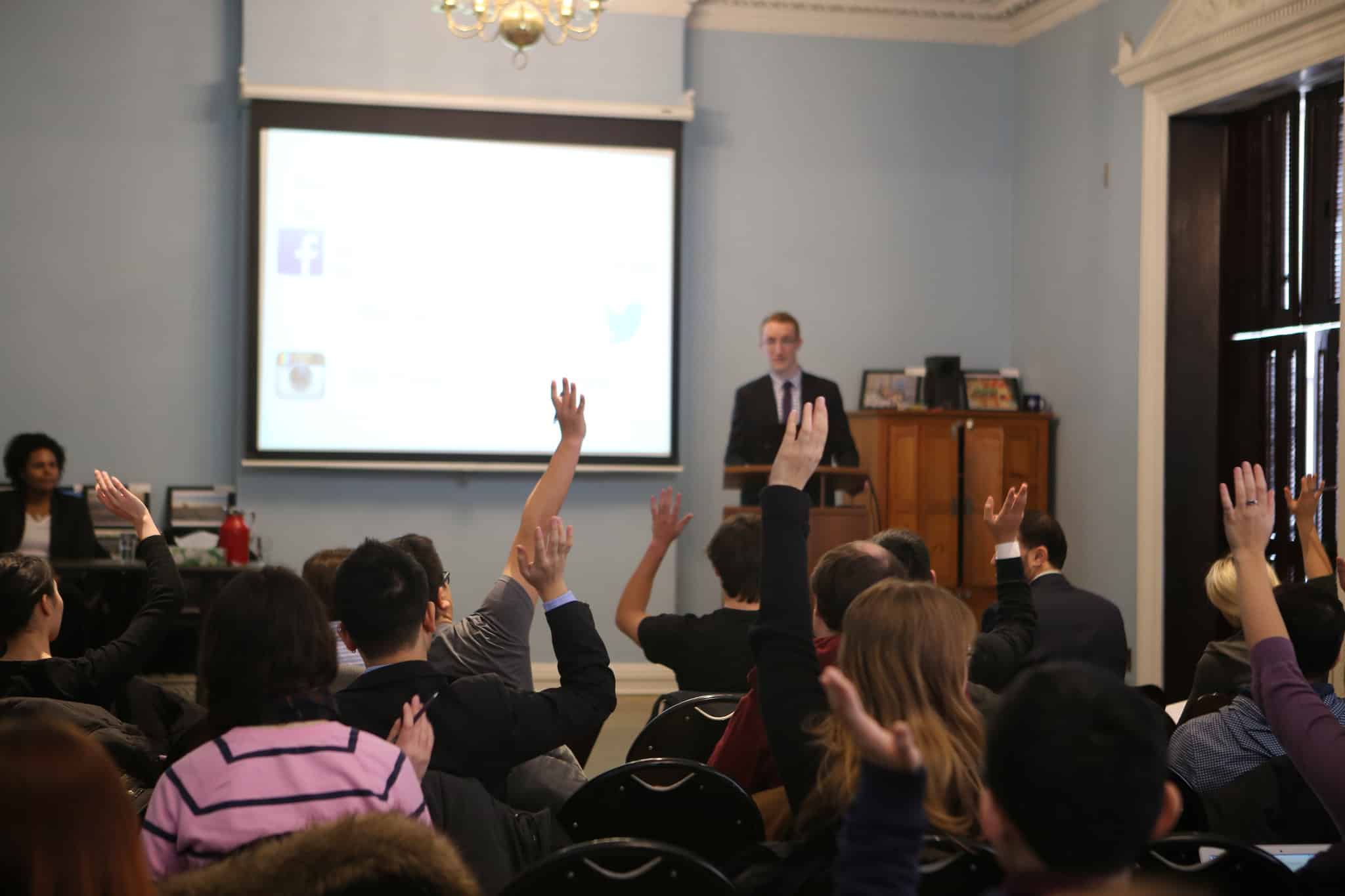Our world is steadily getting smaller. This much became clear on January 21 when United States Vice Consul Max Harrington and his team held a presentation at the Centre for International Experience at the University of Toronto to inform students about how to obtain a visa for work, study, or visitation in the US.
The talk was perhaps as symbolic as it was informative — educational and employment exchange between Canada and the US is just one of the benefits of the countries’ symbiotic relationship.
“We have the largest trading relationship in between our two countries,” Harrington says, referring to the US and Canada. “It’s the easiest of, I think, almost any relationship in the world…for people to move back and forth.”
With degrees from both the University of California and Georgetown University, Harrington has worked in American Citizen Services at the consulate and spent time living in countries around the world. Since his arrival at the Toronto Consulate in August 2013, he has adjudicated more than 20,000 visa applications.
According to Harrington, Toronto is the biggest consulate post in Canada, having issued about 100,000 visas in 2014 alone.
“I think [the relationship] strengthens both countries,” he emphasizes, “I think it’s great that we have been able to open our borders as much as we have.”
A visa is a permit to enter another country..While it does not always guarantee entry, obtaining such a permit opens up doors for individuals to travel, network, or reconnect with family members across the border.
Depending on the period of time the applicant intends to stay in the US, and how that time will be spent, different visas provide for various needs. During the presentation, many students asked about the J-1 nonimmigrant visa for internships, exchanges, and other temporary employment, as well as the I-20 for academic study.
Canadian citizens in particular benefit from the TN nonimmigrant visa, which grants access to work in professional employment fields in the US. This type of visa is available exclusively for Canadian and Mexican citizens under the North American Free Trade Agreement.
“I really enjoyed the mix of people today,” Harrington says, noting that past presentations at other universities typically haven’t garnered much interest from Canadian students when compared to his experience at U of T. “It was a very diverse group,” he adds.
The turnout certainly showcased the university’s diversity. Alongside domestic students, international students from countries including China, Venezuela, India, and Austria came to listen to the talk.
One thing the majority of students had in common was their interest in the H-1B nonimmigrant visa, a permit mainly designated for specialized employment, such as architecture, engineering., or medicine This visa is not subject to Section 214(b) of the US Immigration and Nationality Act, a clause that requires travellers, students, and temporary employees alike to prove that they are going to the US without any intention to immigrate.
“One common pathway of immigration [that] I discussed with some of the students was, you know, going as a student first, and then having the option to do one-year optional practical training after graduation,” Harrington explains.
Though immigration to the US can be difficult, especially in comparison to Canadian policies, having a structured plan to follow helps potential students make important decisions about where to pursue their education, and eventually, their careers.
Visas are just one way for countries like Canada and the US to increase interaction despite geographical barriers.
With the ability to travel comes the opportunity for broader, more significant experiences than a couple of stamps on a passport — opportunities to experience and understand other societies, cultures, and countries on a global level.
“International travel is only going to grow in the future,” Harrington says, adding “The more exchange that we can have between countries, the more connections we can build.”


